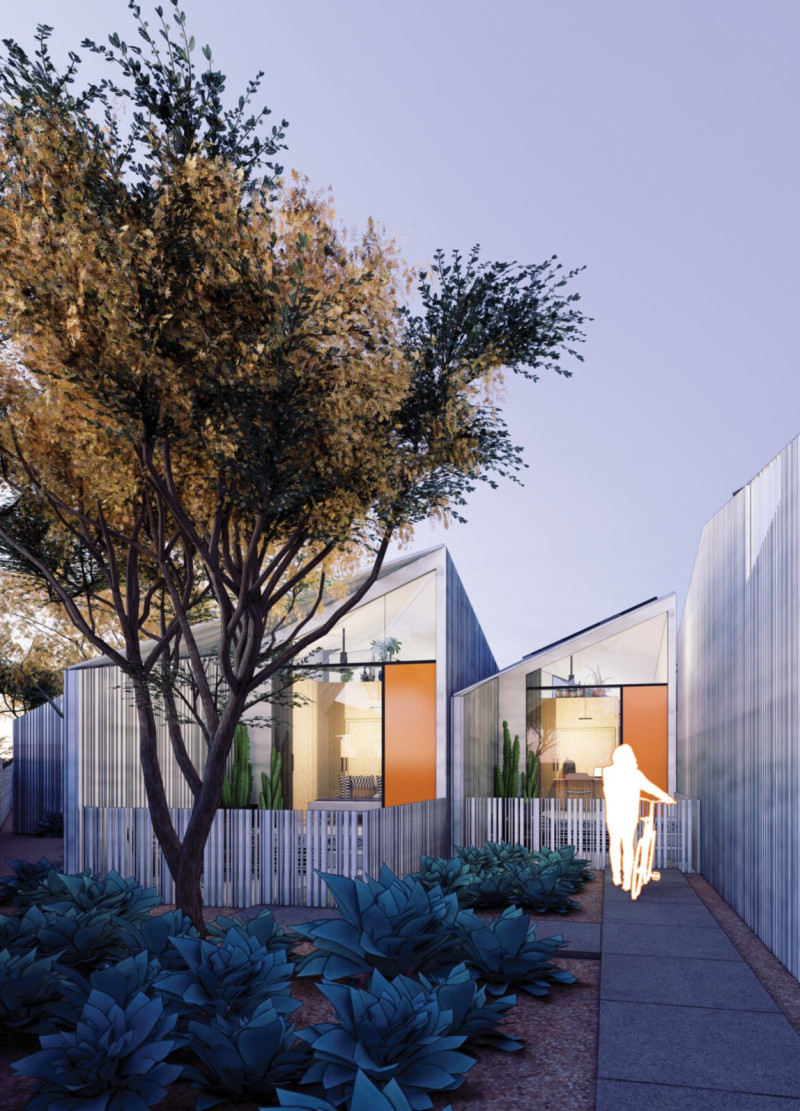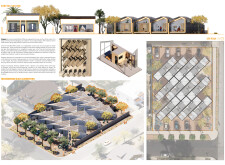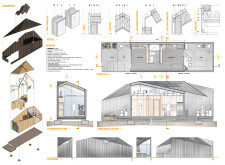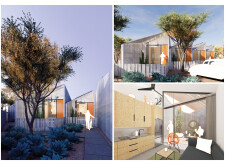5 key facts about this project
### Overview of the Microhome Project in Phoenix
The Microhome project is situated in the Garfield neighborhood of downtown Phoenix, Arizona, addressing critical issues related to affordable housing and community well-being. Developed with an emphasis on sustainability, the design merges innovative architecture with community integration, offering practical solutions while respecting the area's cultural heritage. By focusing on spatial efficiency and communal living, the project aims to enhance resident interaction and contribute to the revitalization of this historically significant area.
### Spatial Organization and Community Engagement
The project features a comprehensive spatial strategy that aligns with existing neighborhood patterns. Each microhome is designed to ensure sufficient spacing and orientation for privacy, while also encouraging community engagement through shared outdoor spaces. The layout promotes social interactions via communal gardens and gathering areas, fostering a sense of community among residents. Off-street parking solutions are integrated to minimize congestion and enhance pedestrian safety.
### Material Selection and Sustainability Initiatives
The Microhome project employs a range of durable materials that underscore both aesthetic value and sustainability. Structural insulated panels (SIPs) are utilized for their superior insulation properties, contributing to energy efficiency. Oriented strand board (OSB) is chosen for its structural integrity and eco-friendliness, while hollow cell polycarbonate panels facilitate natural light influx and insulation. Warm wooden accents throughout the interiors enhance comfort and texture, and concrete serves as a robust foundation for the structures. Additionally, sustainability measures such as rainwater harvesting systems and energy-efficient installations are incorporated to further the project's environmental goals.
Through these design elements, the Microhome project addresses the practical needs of residents while prioritizing community interaction and sustainability.






















































